Merced Today - A Marginal Salmon Stream
While rafting down the lower Merced River on Nov. 10, 1877, John Muir observed:
Fish abundant in deep pools -- salmon, trout, and suckers
Some hundred years later, much has changed on the lower Merced.
While the spring run of chinook on the Merced expired, the fall run sizes have declined on the Merced River since the building of dams and water diversion for ag. During the late 1950's, the fall run shrank to less than 500 salmon for several years. After 1970, fall-run spawning escapements increased to an yearly average of 5,800 fish, peaking at 23,000 spawners in 1985, due to increased streamflows and the Merced River Hatchery which begin operation in 1971.
In the early 1990's, spawning escapements in the Merced River, including returns to the hatchery, dropped below 100 fish in 1990 and below 200 fall-run chinook in 1991. The fall run rebounded to about 1,000 to 2,000 spawners in 1992-93 and to 4,000 to 6,000 spawners in 1996-98.
The Merced River Hatchery processes most of the spawning run in this stream. Accounting for 19% to 67% in 1990-94 and 17% to 30% in 1995-98.
Salmon Hatchery Below Merced Falls
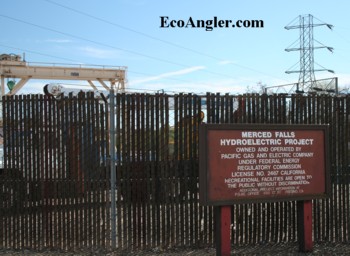
Pacific Gas and Electric Company (P.G.& E.) operates a small hydroelectric project on the lower Merced River near the town of Snelling. This hydro project is just one of several major obstacles for migrating salmon who once spawned as far upstream as El Portal (just below Yosemite National Park).
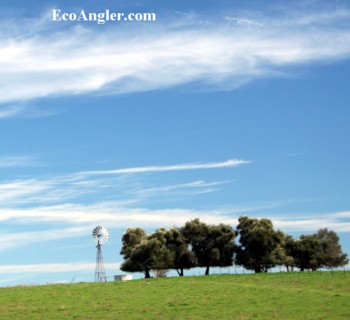
Wind generated electricity doesn't present an obstacle to migrating salmon.
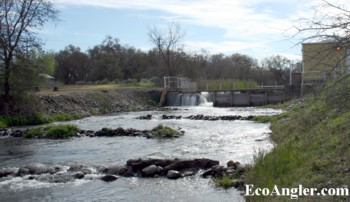
This man-made fish ladder just below the Crocker-Huffman diversion dam represents the end of the road for adult chinook salmon. Presently, the only remaining natural spawning by fall-run chinook occurs in the stretch above Highway 59 to the Crocker-Huffman dam. The Merced River Hatchery (pictured below) operates just below the dam. Fall-run spawners reaching the fish ladder are captured and used as hatchery broodstock.
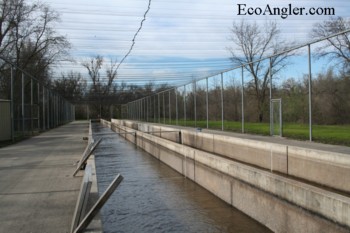
The long concrete pens hold the developing salmon while they are raised on tasty pellets. Tall fences and overhead netting protect the young fish from predatory birds.
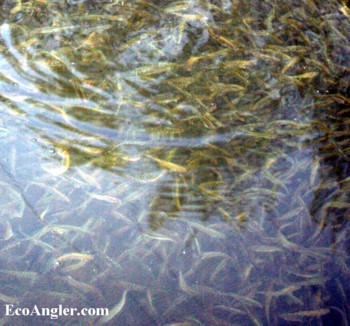
Salmon smolt fill every square inch of space in the holding pens.
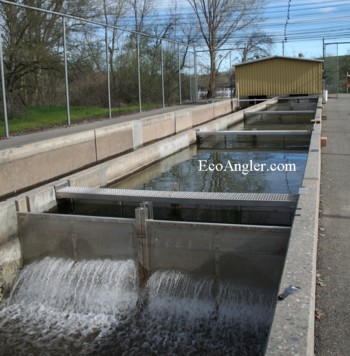
Another view of the hatchery - the developing salmon are separated into smaller pens with water flow created by these gates. The shack near the top pumps a steady stream of water out of the Merced into the pens.
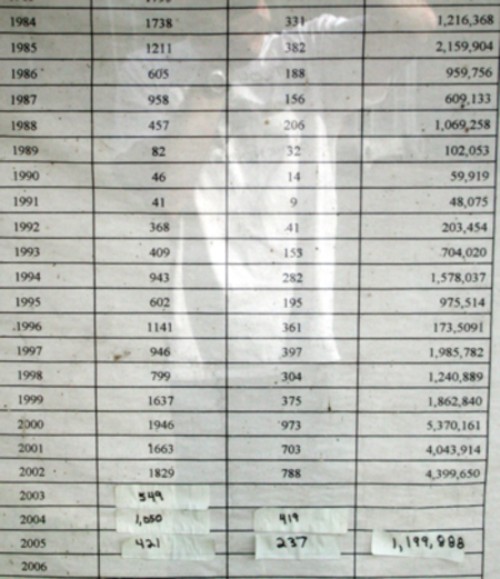
I took a picture of the annual salmon counts for the Merced. The number on the far left represents the year of the count. The two center columns record the number of adult chinook trapped at the hatchery and the right-most column records the resulting eggs spawned. Notice since 2000 a fairly steady decline in the numbers of returning adult chinook.

